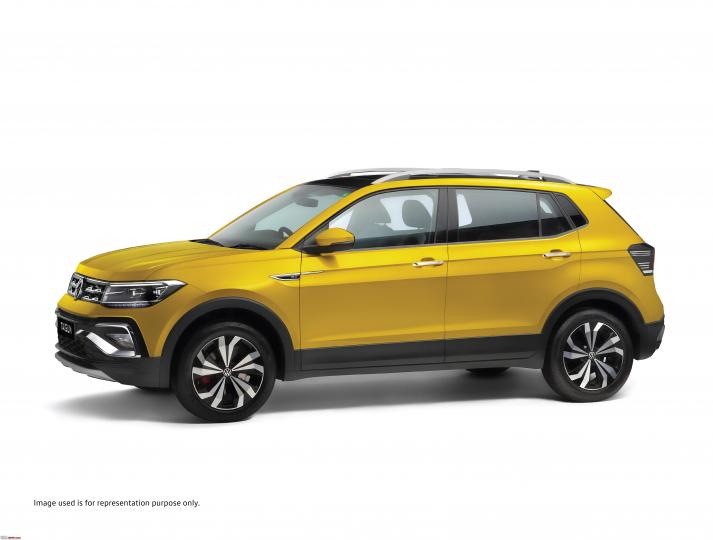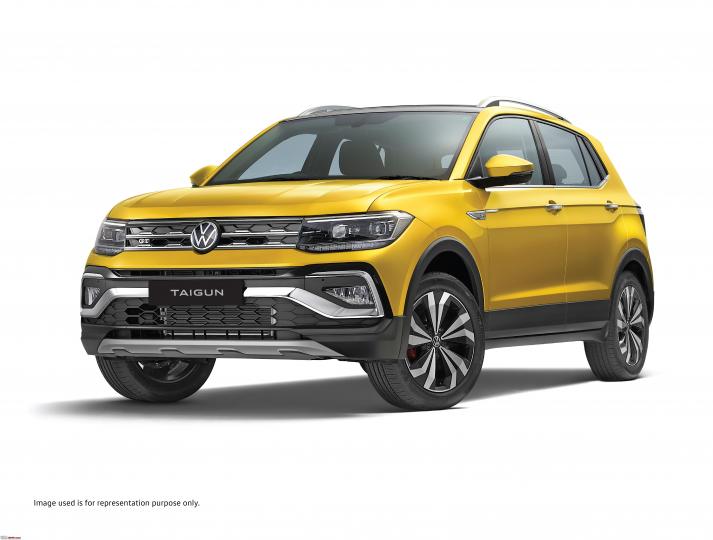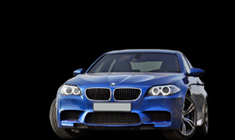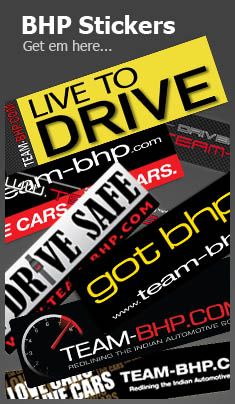News
Volkswagen Taigun | A Close Look & Preview
Slated for launch this festive season, the Volkswagen Taigun will be offered with 2 turbo-petrol engine options - a 1.0 TSI with 6-speed MT and AT transmissions and a 1.5 TSI with a 6-speed MT and 7-speed DSG.
Volkswagen Taigun Preview
The Volkswagen Group had revealed its 'India 2.0' project, led by Skoda Auto, in 2018. A highlight of this project was that the group would be investing more than Rs. 8,000 crore towards the development of new vehicles that would be based on the Indian iteration of its international MQB A0 platform.
The first models to be spawned out of this MQB A0-IN platform would be mid-size Crossovers from Volkswagen and Skoda - the Taigun and the Kushaq respectively. Earlier this month, Skoda arranged a close preview of the Kushaq in Mumbai (click here to read report) and now, Volkswagen has revealed the production version of the Taigun in Goa. While the media got to see the car up close, unfortunately, clicking any pictures of the Taigun and the new Tiguan was prohibited. Also, as per the embargoed document signed for the event, we were restricted to use only the pictures that were provided by VW. This is an extremely strange situation which is unfortunate for readers, and we're still scratching our heads figuring out why? Further, it is VW's loss as the important new car will have limited exposure to the public at large if it's the same handful of pictures being circulated everywhere. Just compare the pictures below to that of our Kushaq report. Which keeps you more engaged? Regardless, GTO requested me to make the most of what's available, so here goes.

Before we get started with the Taigun, let's talk about all the SUVs in Volkswagen's portfolio. Be honest, if you've had a tough time with understanding VWs obsession with 'T' and Skoda's obsession with 'K' and the platforms on which they are based, you're not alone. VW and Skoda SUVs are based on different iterations of the MQB platform, which is essentially scalable and allows them to make SUVs of different sizes according to the market requirement. The MQB platform is in its second generation. Some cars (on sale in global markets) like the Audi Q2, Volkswagen Passat and Skoda Superb, still using the first generation platform. The second generation of the MQB is the A-series and here is a list of SUVs that use this platform:
- MQB A0 - Volkswagen T-Cross - Skoda Kamiq
- MQB A0-IN - Volkswagen Taigun - Skoda Kushaq
- MQB A1 - Volkswagen T-Roc - Skoda Karoq
- MQB A2 - Volkswagen Tiguan (Allspace) - Skoda Kodiaq
Since this was just a brief preview, here is some information provided by VW along with my observations on the Taigun:

- Slated for launch this festive season, the Taigun will be offered with 2 turbo-petrol engine options - a 1.0 TSI with 6-speed MT and AT transmissions and a 1.5 TSI with a 6-speed MT and 7-speed DSG. Basically the same as the Kushaq.
- The car will come in a front-wheel-drive configuration only. Not offering a diesel will be a major handicap as the two best-sellers in the segment (Hyundai Creta and Kia Seltos) are available with diesel options, as are most competitors. Hyundai recently announced that 60% of Creta's sales are from the diesel.
- Localisation percentage of the Taigun will be at 95%, so we hope VW prices the Taigun competitively.
- There will be a 'GT' variant offered (shown in the pictures) that will have the 1.5 TSI engine making 148 BHP and 250 Nm.
- The non-'GT' variant will get the smaller 1.0 TSI engine that makes 113 BHP and 175 Nm.
- Some noteworthy features are - 6 airbags, ESC & Hill Hold Assist (standard across all variants), 3-point seatbelts for all passengers, ventilated seats, digital cockpit, 10-inch touchscreen, ambient lighting, auto headlamps and wipers.
- The car has a wheelbase of 2,651 mm which is longer than the Hyundai Creta, Kia Seltos (2,610 mm) and Jeep Compass (2,636 mm). In person, the car does look a size smaller than the Creta or the Seltos. Moreover, it doesn't feel as tall, which makes it look like a soft crossover than an SUV.

- Panel gaps are consistent and the build quality is good too. While it may not be up there at Tiguan levels, it's satisfactory. I was expecting the build quality to be way better than the Hyundai Creta and Kia Seltos and while it is better, the Koreans aren't too far behind. The difference isn't stark.
- Up front, the car looks like a mini Tiguan which is a good thing. Styling is contemporary and the car looks good in the flesh. It carries the new VW badge on the grille. The LED projector headlamps have a nice design and get LED DRL strips at the top and turn-indicators below.
- The bumper has a wide air dam with a bold chrome strip that runs on it and around the fog lamps on either side. The chrome does feel loud, but most won't be bothered by it. You have a silver faux skid plate at the bottom.

• On the sides, you'll notice that the car has plenty of straight creases that run from the front fenders to the tail-lights. These look great in person and make the car look sharp. It shows that there's effort gone into designing and building the car with precision. Typical VW stuff.
• Alloy wheel design isn't very eye-catching IMO, but it does the job. The 17-inch wheels are shod with 205/55 R17 tyres. Front wheels come with disc brakes and in the GT variant, you get red calipers. The rear wheels get drum brakes and all wheel wells have full plastic cladding.
• The fender adorns a GT badge, while the black applique on the B-pillar gets 'Volkswagen' embossed on it. What looks like a quarter glass on the C-pillar is actually just a piano black insert.
• The car on display had a black roof along with roof rails (not functional).

- The tail-lamp stretches across the tailgate, which is very Dodge Charger-like (reference image). We like this unique design touch, but will reserve our final opinion for when we see it on the road (cars look different inside a hotel and on tarmac). Taigun badge is placed in the center of the tailgate with the GT badge in the bottom right corner. Just like the front, the rear bumper gets a chrome strip, houses reflectors and wears a silver faux skid plate.

- Getting in and out of the car is pretty easy. You just walk into the cabin with the seats placed at the perfect height to simply slide into them.
- VW hasn't shared any images of the interiors (go figure!!!!), but the dashboard has a similar design to that of the Skoda Kushaq (reference image).
- The quality of materials used in the cabin and the fit & finish are excellent. That said, there are no soft-touch elements, and you will find plenty of hard plastics here.
- Front seats are ventilated and offer good support overall. The cushioning is on point here. No powered seats; you will have to adjust the driver seat manually. Their travel range is healthy, as is usually the case with VWs.
- The steering is adjustable for rake as well as reach.
- Overall visibility from the driver's seat is good and the ergonomics are great too. Everything is easy to reach and operate as well. The door pockets can accommodate 1-liter bottles with ease and you have decent storage spaces on the center console as well.
- Unlike the Skoda Kushaq, the engine start-stop button is placed on the center console like the old Tiguan (reference image).
- As is a trend in cars these days, the Taigun gets a digital cockpit that is very clear and displays plenty of information. You can operate this with the buttons on the steering wheel which are of good quality and feel built to last.
- The GT variant gets sporty aluminium pedals with black rubber grips.
- 10-inch touchscreen, which is shared with the Kushaq, gets a neat layout that is very user-friendly reference image). The display is crisp and the touch is very responsive as well. You have stationary menu buttons on the left side of the screen and on the right side - interestingly - you have the traction control off switch.
- A/C unit gets a touch control panel. Some people will like this, but we frankly prefer physical knobs & controls. It sucks for the driver to take his eyes off the road to change the air-con settings.
- In the rear, you have fair legroom. At 5'10", with the front seat adjusted to my own driving position, I had enough space. Headroom wasn't an issue for me but for 6-footers and taller occupants, it will be a concern. Apart from this, the sunroof mechanism takes up most of the space in the roof and restricts the view of tall people.
- The seatback is a little upright, yet overall comfort levels are good. A major irritant are the seat rails on which the front seats are mounted. These severely restrict the foot space which is why even though you have good legroom, you will have to place your feet close to each other if you wish to stretch out your legs under the front seat.
- Seating three adults in the rear seat will be tough. The seat is better for 2 adults and a kid. The good news is that all the passengers get 3-point seatbelts. The seats fold in 60:40 ratio and also have ISOFIX seat anchors as standard across all variants.
- You get rear A/C vents below which, you have 2 USB-C ports like the Kushaq (reference image).
- The boot is smaller than what the competition offers (Kushaq's capacity was rated at 385 liters). Spare wheel is a 16-inch steel unit.























